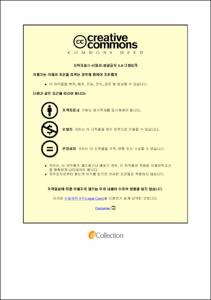중국 체결 FTA의 직접운송원칙 적용에 관한 연구
- Abstract
- A Study on the Application of Direct Transport Rule under the Chinese FTAs
BINGSEN ZHAO
Department of International Commerce & Logistics
Graduate School, Pukyong National University
ABSTRACT
The direct transport rule is an important part of FTA rules of origin. In principle, only goods that are transported directly between the parties may apply for preferential tariffs. However, if it is transported through a third country, due to geographical reason or transportation requirement, it shall also be regarded as direct transport. In this case, no other process should be undertaken to keep the goods in good condition.
China and Korea have different FTA direct transport principles with different countries. The area with the most noticeable differences are the time allowed to stay in the third country. The areas with the most noticeable differences relate to the time allowed to stay in the third country. The FTA that China constructed stipulates that the period of stay allowed through the third country is strictly regulated. However, the FTAs made by the Republic of Korea did not strictly stipulate about the period of stay through the third country except for the Korea-China FTA. Korean exporters and importers should pay special attention to time limitations on imports and exports to China. In terms of the document requirements for the FTAs, the obligations of document submissions by the Republic of Korea vary greatly, and the obligations of China to submit documents are relatively unified. Although the number of FTA agreements that specify the requirements for document submission is low in Korea, there is a specific feature in the submission documents.
In the Chinese case analysis, it was found that shippers need to pay attention to the following points in order to adhere to the direct transport rule. First, Customs in Hong Kong and Customs inland in China should be regarded as different customs. Careful attention should be paid to the possibility of violating the principle of direct transport when passing through Hong Kong. Second, in the case of Chinese customs, the interpretation of the principle of direct transportation may vary depending on the person in charge or the region. It may also be different depending on the recognition of the seniority of each customs officer, the recognition of his successor, and subjective perception. Since the regulatory content does not cover all situations and is interpreted by the person, the parties must thoroughly prepare the documents.
- Issued Date
- 2017
- Awarded Date
- 2017. 8
- Type
- Dissertation
- Publisher
- 부경대학교
- Affiliation
- 부경대학교 대학원
- Department
- 대학원 국제통상물류학과
- Advisor
- 조 찬 혁
- Table Of Contents
- 제 1 장 서론 1
제1절 연구의 배경 및 목적 1
제2절 연구의 내용 및 방법 2
1.2.1 연구의 내용 2
1.2.2 연구의 방법 3
제 2 장 선행연구 4
제1절 직접운송원칙의 의미 4
제2절 원산지규정에 대한 선행연구 5
제3절 직접운송원칙에 대한 선행연구 10
제 3 장 중국 FTA 체결현황 14
제1절 중국의 FTA 체결현황 14
제2절 중국 FTA 원산지규정 현황 15
제3절 중국 FTA 직접운송원칙 현황 16
제4절 중국과 한국 FTA 직접운송원칙 동일규정의 차이점 19
3.4.1 중국․아세안 및 한국․아세안 19
3.4.2 중국․싱가포르 및 한국․싱가포르 21
3.4.3 중국․호주 및 한국․호주 23
3.4.4 중국․뉴질랜드 및 한국․뉴질랜드 25
3.4.5 중국․페루 및 한국․페루 26
3.4.6 중국․칠레 및 한국․칠레 28
제 4 장 중국 FTA 직접운송원칙 특징 및 중국 적용사례 분 석 31
제1절 중국과 한국 FTA 직접운송원칙 동일규정의 특징 분석 31
제2절 중국과 한국 FTA 직접운송원칙 특징 분석 35
4.2.1 중국 FTA 직접운송원칙 협정문 35
4.2.2 한국 FTA 직접운송원칙 협정문 38
4.2.3 소결 40
제3절 중국 적용사례 분석 42
4.3.1 사례1 42
4.3.2 사례2 44
4.3.3 사례3 46
4.3.4 사례4 47
4.3.5 사례분석 결과 48
제 5 장 결론 50
제1절 연구의 요약 및 시사점 50
제2절 한계점 53
*참고문헌 54
- Degree
- Master
- Appears in Collections:
- 대학원 > 국제통상물류학과-FTA비즈니스전공
- Files in This Item:
-
-
Download
 중국 체결 FTA의 직접운송원칙 적용에 관한 연구.pdf
기타 데이터 / 653.78 kB / Adobe PDF
중국 체결 FTA의 직접운송원칙 적용에 관한 연구.pdf
기타 데이터 / 653.78 kB / Adobe PDF
-
Items in Repository are protected by copyright, with all rights reserved, unless otherwise indicated.